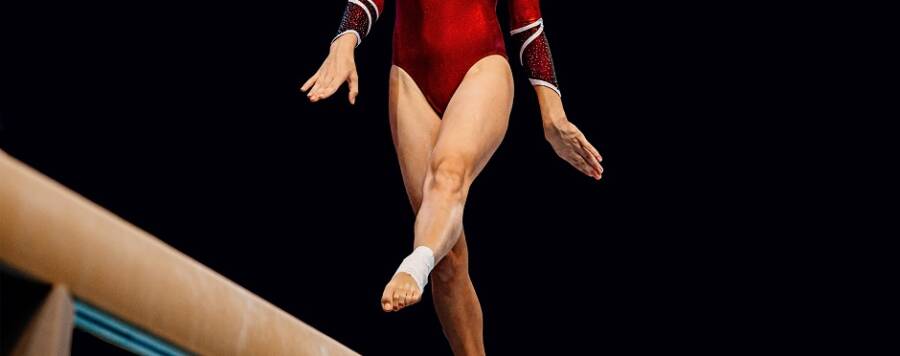1. Set realistic goals
Gymnasts are returning to this high school season with different amounts and intensities of training behind them. Now is a good time to reflect on where you are at in your training. When is the last time you did full routines? What skills were in your routines and how confident are you in those skills? Your goal may have been to throw a new tumbling pass on floor for the first time this season, but if you have only done it into the pit, this might not be the season to unveil that new skill. Instead, focus on the skills that you can do really well so that you are setting yourself up for successful routines!
2. Practice your landings
This is one of the most important exercises that you can do every day! Practice jumping and landing in a stick position. Think about every part of your body and where it is positioned so that you can maintain that stick position. Are you looking straight ahead? Where are your arms? Are your stomach muscles tight? Are your knees slightly bent to absorb the landing? Practice jumping off a mat and hold that landing position for three seconds. Landing drills should be practiced off of high surfaces (vault or beam), in various directions (forward/backward) and in all different patterns (one foot, twisting and rebounding too). Practice five repetitions of landing drills before every event at each practice!
3. Injuries happen when fatigued
With a limited preseason and a shortened season, endurance plays an important factor. Endurance at the end of a routine takes time to build. Most injuries occur when an athlete is tired, so it is important to select the most appropriate skills for your last tumbling pass or dismount. Consider avoiding twisting skills in your last tumbling pass or in your dismount if your endurance is not at competition level yet.
4. Quality over quantity
In a shortened season, there will be lots of energy and excitement around competing again. You may feel like you need to practice your routines over and over again so that they are perfect. However, doing more repetitions is not the same as doing high quality repetitions. To avoid overuse injuries, concentrate on performing a limited number of a few skills or routines, but do them really well. For example, practice three high quality competition vaults and focus on making small improvements with each repetition instead of doing ten vaults that might not be the best quality.
5. Find your joy!
This is not the season you envisioned, however you still have a unique opportunity to compete in the sport that you love! This season will absolutely be different. Instead of focusing on what is missing, bring your attention to the opportunity ahead of you. Be grateful for every routine you get to perform and take it all in! On the days where practice is hard or things aren’t going right, think back to fall when all you wanted to do was start your season and compete for your school. Celebrate every accomplishment – big or small, and have fun doing it!
6. Don’t ignore the pain
If you develop pain during or following high school gymnastics season, don’t ignore it! Your high school’s athletic trainers are great resources to help with any injuries. You can also contact your local Athletico to schedule a free assessment or begin physical therapy to treat your injury.
Athletico provides rehabilitation services to gymnasts at all levels and abilities. Our goal is to evaluate, treat, and educate athletes in the prevention of practice and competition-related injuries. Technical evaluations can be performed to improve postural awareness and maximize the function of each athlete. We have physical therapists and athletic trainers, including former gymnasts and cheerleaders at the high school, collegiate and Olympic levels, involved with our Gymnastics and Cheerleading Program. Our clinicians understand the demands of the sport and use their personal and professional experience to effectively address the physical and psychological needs of each athlete.
For more information contact a Gymnastics and Cheerleading Rehabilitation Clinician by emailing Gymcheer@athletico.com.
Melissa Winterhalter is a former high school and college gymnast. She was part of three of Stevenson High School’s state championship winning gymnastics teams. Melissa is a physical therapist with Athletico in Des Plaines, IL and specializes in the treatment of gymnasts.
The Athletico blog is an educational resource written by Athletico employees. Athletico bloggers are licensed professionals who abide by the code of ethics outlined by their respective professional associations. The content published in blog posts represents the opinion of the individual author based on their expertise and experience. The content provided in this blog is for informational purposes only, does not constitute medical advice and should not be relied on for making personal health decisions.

 width="900"
height="356"
>
width="900"
height="356"
>
